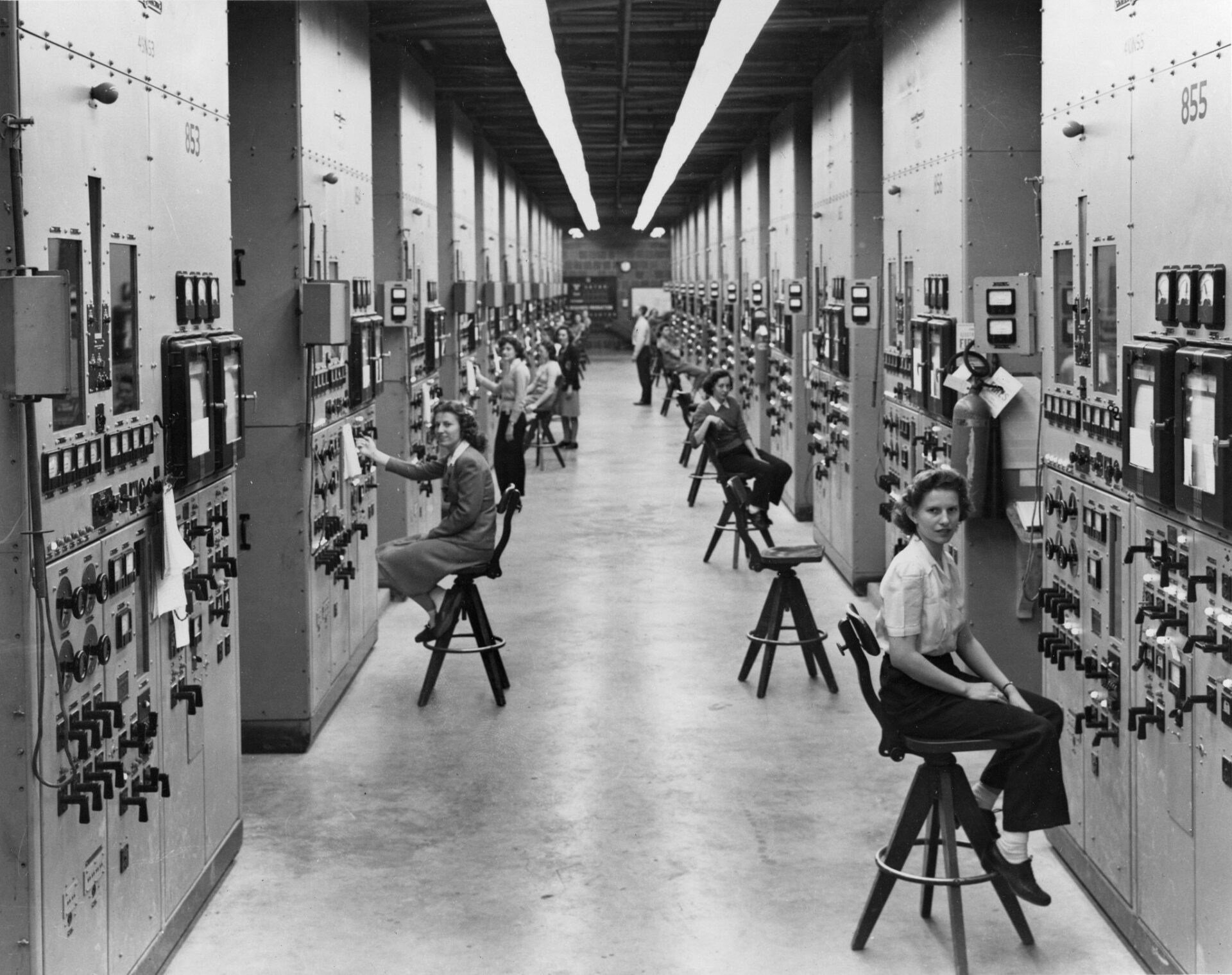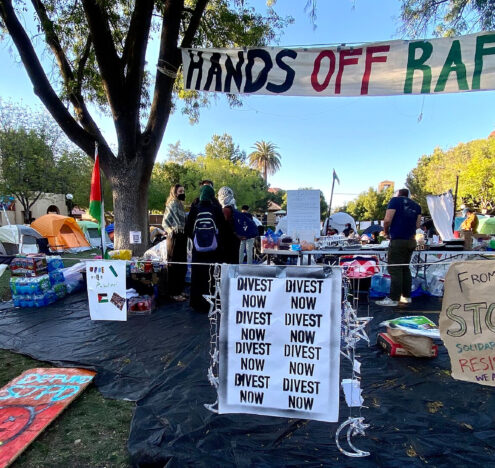Nuclear weapons pose more of a threat now than ever before. President Vladimir Putin discusses using “tactical” nuclear weapons in Ukraine, and nuclear weapon states are modernizing their arsenals instead of reducing them. In the midst of this dangerous behavior, “Oppenheimer” — the biopic about J. Robert Oppenheimer, the “father of the bomb” — comes out this Friday, Jul. 21, 2023. Directed by Christopher Nolan and portrayed by an all-star cast, the film is highly anticipated and will undoubtedly generate a renewal in public interest in nuclear weapons. It remains to be seen whether this interest will take the form of fascination or concern around the bomb.
Oppenheimer and his team of scientists in the Los Alamos Laboratory worked within a top-secret military-industrial complex that changed the world forever. The nuclear bomb came to be in a 15-second burst of light, fire, and radiation — the Trinity Test. The spectacular demonstration of destruction led Oppenheimer to recall the Hindu scripture, “Now, I am become death, the destroyer of worlds.”
The work at Los Alamos has become scientific folklore. Driven by fear of Nazi power, the physicists lived and worked to build “Fat Man” and “Little Boy,” the atomic bombs that would be dropped on Hiroshima and Nagasaki a month later. Since 1947, the Manhattan Project has been the subject of the big screen. Oppenheimer was reportedly unhappy with his character’s depiction in “The Beginning or the End” (1947) and did not live to see “Fat Man and Little Boy” (1989), “The Day After Trinity” (1999), or “Good Night and Good Luck” (2005). His story is often recounted as a Faustian bargain: a trade-off between personal morality and worldly power.
The new film’s characters are complex, and none more so than the protagonist Oppenheimer who in his lifetime was accused of associating with communists and stripped of his security clearance. He also lost both his mistress and his daughter to suicide and — of course — developed the most destructive weapons technology on the planet. The battles of Oppenheimer’s own mind continue to play out between activists, scientists, and military personal today: Did this work save lives or take them?
Whilst there is nothing innately wrong with retelling the story of Oppenheimer, it is important to consider what remains untold. Whose story is obscured or silenced? Whose history is forgotten? Whose sacrifices were not important? There are many who are not memorialized, commemorated, or dramatized in the ways that Oppenheimer has been, is, and seemingly will always be. But the truth is that many people have lost their lives in the name of nuclear arsenals.
The Unforgotten Forgotten
The story of the Manhattan Project is often told through American men and their heroic war-fighting efforts. Set in a beautiful town of white picket fences surrounded by spectacular canyons, Los Alamos was far away from the colonized and racist consequences of nuclear weapon development. Most of the uranium used in the Manhattan Project’s nuclear bombs came from mines in the Belgian Congo, where local workers were robbed of their land, resources, and health to further the nuclear weapons program. Native Americans were forced from their land in New Mexico, with many of their women only able to return as maids of Los Alamos. The labors of working-class women who handled uranium, uninformed about the lasting radiation impacts of their dangerous work, are forgotten.
Also forgotten are the stories of several hundred women involved in the project. The Calutron Girls were a group of young women, many just graduated from high school, who were tasked with (wo)manning the Manhattan Project’s calutron (the machine that separated enriched uranium isotopes). Female physicists played essential roles in the invention and manufacturing of the nuclear bomb. Isabella Karle was a daughter of Polish immigrants who discovered breakthrough molecular properties that earned her husband a Nobel Prize. Leona Woods Marshall was a vital part of the 47-man 1-woman team who successfully operated Chicago Pile-1, the world’s first nuclear reactor. Lilli Hornig fled Nazi Germany and grew up to work on plutonium and explosives in the Manhattan Project. She later advocated for the bomb to never be used against civilian populations. She also remained a fierce advocate for women in science all her life. The Manhattan Project was a man’s world, but these women remind us that neither atomic energy nor nuclear weapons were the brainchild of all-American men.
There are many who are not memorialized, commemorated, or dramatized in the ways that Oppenheimer has been, is, and seemingly will always be. But the truth is that many people have lost their lives in the name of nuclear arsenals.
The story of nuclear weapons is one of creation (although what was created was the ultimate tool of destruction). Nuclear discourse is flooded with metaphors of weapons as babies, destruction as fertility, and war as sex. Images of male birth humanize the bomb as “Oppenheimer’s baby,” and the H-bomb as “Teller’s baby,” named after Edward Teller, a Hungarian-American theoretical physicist. New “generations” of bombs join intercontinental ballistic missile “families” until they are eventually “retired.” This language presents nuclear weapons as if they are part of a natural and organic lifecycle, not the unchanging sedentary of metallic weapons.
The origin story of nuclear weapons is told as one of genius and enlightenment, with the less glamorous details removed from the frame. In the three-year period of the Manhattan Project, there were 24 deaths in Los Alamos. Some of these were related to heavy machinery and radioactivity, but others included drunken accidents and falling trees. One serviceman, cleaning his gun, accidentally shot his bunkmate while he slept. In a strange way, these unusual and unknown tales make the story more human, more alive to error and misjudgment, challenging the story of scientific brilliance that we are told.
Ultimately, the story of Oppenheimer and the Manhattan Project is told as one of greatness, heralding the men (and state) able to balance great power with great responsibility. The United States is at the center and deemed exceptional. Forgotten are the contributions of the Allies, the United Kingdom, and Canada. Ignored or downplayed is the violence of Hiroshima and Nagasaki, presented as a necessary evil to end the war. The United States remains history’s only perpetrator of nuclear warfare. The only nuclear weapons detonated in the United States were done so by the United States itself. By 1992, 928 nuclear tests were conducted at the Nevada Test Site, for which the US government is still paying compensation to “downwinders” inter-generationally impacted by fallout.
Challenging the Origin Story
Too often, the telling of this story resigns nuclear weapons to the past, discouraging interrogation of the present. If you were to visit New Mexico today, you could walk in the footsteps of these great men, pass the inspiring slogan “Welcome to Los Alamos, Where discoveries are made,” and take a stroll down Oppenheimer Drive. Like the story of Oppenheimer, the museums and exhibitions in Los Alamos present a carefully curated perspective of nuclear warfare that glamorizes and glorifies the nuclear industry. These sites subtly suggest that nuclear weaponry and war are something of the past, discouraging reflection on ongoing nuclear threats and injustices that never disappeared.
The origin story that we know, and that we will see retold, obscures the gendered and colonial history of exploitation, forgotten labor, and the lasting impacts of nuclear weapon production. It is possible to tell this story in a very different way, centering new characters, exploring new settings, and following different timelines. It is possible that Nolan’s “Oppenheimer” will break with some or all of these tendencies in the retelling of the Manhattan Project. I expect, and welcome, that the topic will be approached with some reflection and humility, not least given Russia’s ongoing illegal invasion of Ukraine. It is important that the lesser-known — but no less real — violence of nuclear weapons is not lost within the spectacular cinematic dialogue, drama, and detonations of “Oppenheimer.”





















